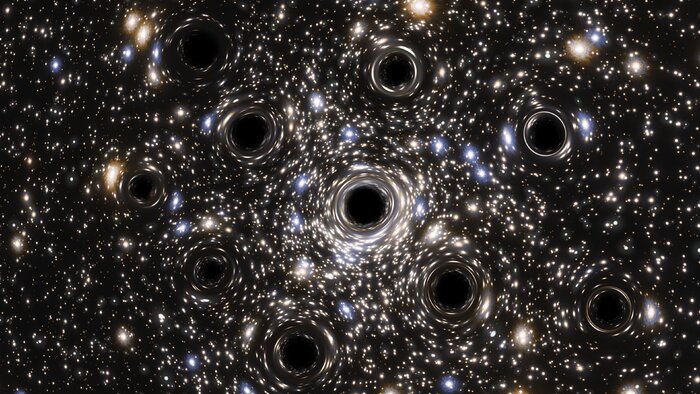Black holes pack an extraordinary amount of mass into a small spatial volume, resulting in gravitational fields so powerful that not even light can escape. These extreme objects occur as two distinct populations in the universe. The first, called stellar black holes, form from the collapse of massive stars and can possess anywhere from a few to dozens of times the Sun's mass. The second population, supermassive black holes, are found usually as single (although occasionally as double) objects in the cores of most galaxies. As their name suggests, supermassive black holes contain millions to even billions of times the Sun's mass. Astrophysicists expect that a third population of black holes exists, bridging the substantial mass gap between the two well-documented black hole populations. This third population, known as intermediate-mass black holes (IMBHs), would have on the order of hundreds to thousands to even tens of thousands of solar masses. If confirmed, IMBHs would help solve the mystery of the formation of supermassive black holes. Depending on their mass and cosmic environments, IMBH origins could be “bottom-up,” involving the merging of many stellar black holes, or the merging of numerous massive stars within dense star clusters into a colossal object that quickly collapses into an IMBH. Alternatively, IMBHs could have a top-down genesis, arising from the collapse of huge amounts of available mass in the early universe. That top-down scenario is the favored—albeit unsubstantiated—formation model for supermassive black holes as well. Whichever way IMBHs appear to form would accordingly hone formation and evolution theories for supermassive black holes by potentially showing the lower-end mass levels that can arise from the top-down scenario or placing supermassive black holes alone in that origin scenario. See also: Black hole; Mass; Universe

Some observational evidence has emerged for IMBHs, specifically in the form of anomalously powerful x-ray flares plausibly caused by an IMBH's gravity shredding a star. To put IMBHs on firmer observational footing, astrophysicists have adopted a search strategy based on observing dense star clusters—ideal environments for facilitating the two bottom-up IMBH formation scenarios. In a study published in February 2021, a research team reported results regarding the tracking of the positions and velocities of stars in the core of the nearby globular cluster NGC 6397, based on data from the Hubble Space Telescope, The Very Large Telescope, and the Gaia space observatory. Globular clusters are gravitationally bound stellar systems containing, on average, about 100,000 stars. The researchers expected to see motions of stars consistent with movement around an unseen, massive, and compact object at the cluster's center—a candidate IMBH. Instead, the motions of the stars were random, indicating that multiple unseen objects collectively weighing approximately as much as 1,000 to 2,000 Suns are scattered throughout the cluster's inner region. The presence of a vast collection of stellar black holes deriving from the demise of massive, short-lived stars in the cluster agrees with these observations. See also: Globular clusters; Hubble Space Telescope; Orbital motion; Star; Very Large Telescope
While these findings have not identified a highly sought IMBH, the results do support the idea that many stellar black holes can associate in dense star clusters and could merge over time into an IMBH. Supportively, such mergers are strongly evidenced to occur on a regular basis, according to observations by the Laser Interferometer Gravitational-wave Observatory (LIGO). A first-of-its-kind observatory and in operation since 2015, LIGO captures minuscule perturbations caused by gravitational waves—ripples in spacetime—as these waves pass through Earth. LIGO has catalogued dozens of these events, which are consistent with extremely energetic, spacetime-warping mergers of stellar black holes. Further investigations of dense star clusters should turn up evidence of IMBHs—if, in fact, they exist—as well as potentially strengthen the bottom-up origin scenario of IMBHs. See also: Gravitational radiation; LIGO (Laser Interferometer Gravitational-wave Observatory); Spacetime





